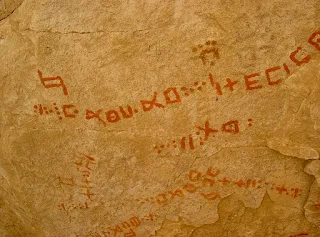Introduction:
The pyramids of Giza are one of the most fascinating and enigmatic structures of the ancient world. They are the only remaining wonders of the seven wonders of the ancient world, standing tall and proud in the desert landscape of Egypt. The Great Pyramid, the most iconic of the three pyramids, is believed to have been built over 4,500 years ago, and to this day, there is no consensus on how they were built. This article will explore the mystery of the pyramids of Giza, discussing the various theories about their construction and the mysteries that still surround them.
Historical Background:
The pyramids of Giza were built during the Old Kingdom of Egypt, between 2589-2504 BC. The three pyramids were built as tombs for the pharaohs Khufu, Khafre, and Menkaure, and were constructed over a period of about 85 years. The Great Pyramid of Khufu, the largest of the three, is made up of over 2 million stone blocks, weighing between 2 and 80 tons each. The construction of the pyramids required an incredible amount of manpower, resources, and organization, and it is still a mystery as to how the ancient Egyptians were able to construct such massive structures without the use of modern technology.
Theories of Construction:
Over the years, many theories have been proposed as to how the pyramids of Giza were built. Some of the most popular theories include the use of ramps, cranes, and pulleys, as well as the use of water to move the massive stone blocks. However, none of these theories have been conclusively proven, and there are still many mysteries surrounding the construction of the pyramids.
The Ramp Theory:
One of the most widely accepted theories of pyramid construction is the use of ramps. This theory suggests that the ancient Egyptians used ramps to move the massive stone blocks up the pyramid during construction. The ramps would have been built at an incline and would have been made up of mud bricks or limestone blocks. As the blocks were moved up the ramp, additional blocks would have been added to the ramp to increase its height.
The Crane and Pulley Theory:
Another popular theory is the use of cranes and pulleys. This theory suggests that the ancient Egyptians used a system of levers and pulleys to lift the massive stone blocks into place. The blocks would have been lifted using wooden cranes or pulleys made of rope and used by a team of workers. However, there is little evidence to support this theory, and it is unclear how the ancient Egyptians would have been able to construct such complex machinery without the use of metal tools.
The Water Theory:
One of the most intriguing theories of pyramid construction is the use of water. This theory suggests that the ancient Egyptians used water to move the massive stone blocks up the pyramid. The blocks would have been placed on wooden sleds and then floated up the pyramid using water channels. The channels would have been filled with water, and the sleds would have been pushed up the ramp by a team of workers. However, there is little evidence to support this theory, and it is unclear how the ancient Egyptians would have been able to create the necessary water channels and control the flow of water.
Mysteries Surrounding the Pyramids:
In addition to the mystery of their construction, there are still many mysteries surrounding the pyramids of Giza. For example, it is still unclear how the ancient Egyptians were able to align the pyramids so precisely with the stars. The Great Pyramid, in particular, is aligned with incredible accuracy to true north, and the angles of the pyramid are believed to have been designed to correspond to the movement of certain stars.
Another mystery surrounding the pyramids is the presence of hidden chambers and passageways within the structures. Many of the pyramids have been explored extensively, but there are still hidden chambers and passages that have yet to be fully explored. In 2017, a team of researchers discovered a previously unknown chamber within the Great Pyramid using cosmic-ray imaging technology. The purpose of these hidden chambers and passages is still unknown, but they add to the intrigue and mystery of the pyramids.
Conclusion:
The pyramids of Giza remain one of the most enigmatic structures of the ancient world, and their construction and purpose continue to fascinate scholars and laypeople alike. Despite centuries of study and research, many mysteries still surround the pyramids, including how they were built and the purpose of hidden chambers and passages within the structures. While theories have been proposed, no single theory has been conclusively proven, and it is likely that the mystery of the pyramids will continue to captivate the imaginations of people for centuries to come.
Bibliography:
Hawass, Zahi. "The mysteries of the pyramids." Smithsonian Magazine, January 2019 .
Lehner, Mark. "The construction of the pyramids." Ancient Egypt Research Associates.
Meltzer, David. "The mystery of the pyramids." National Geographic, April 2017.
Romano, James. "How the pyramids were built." BBC, September 2020,





